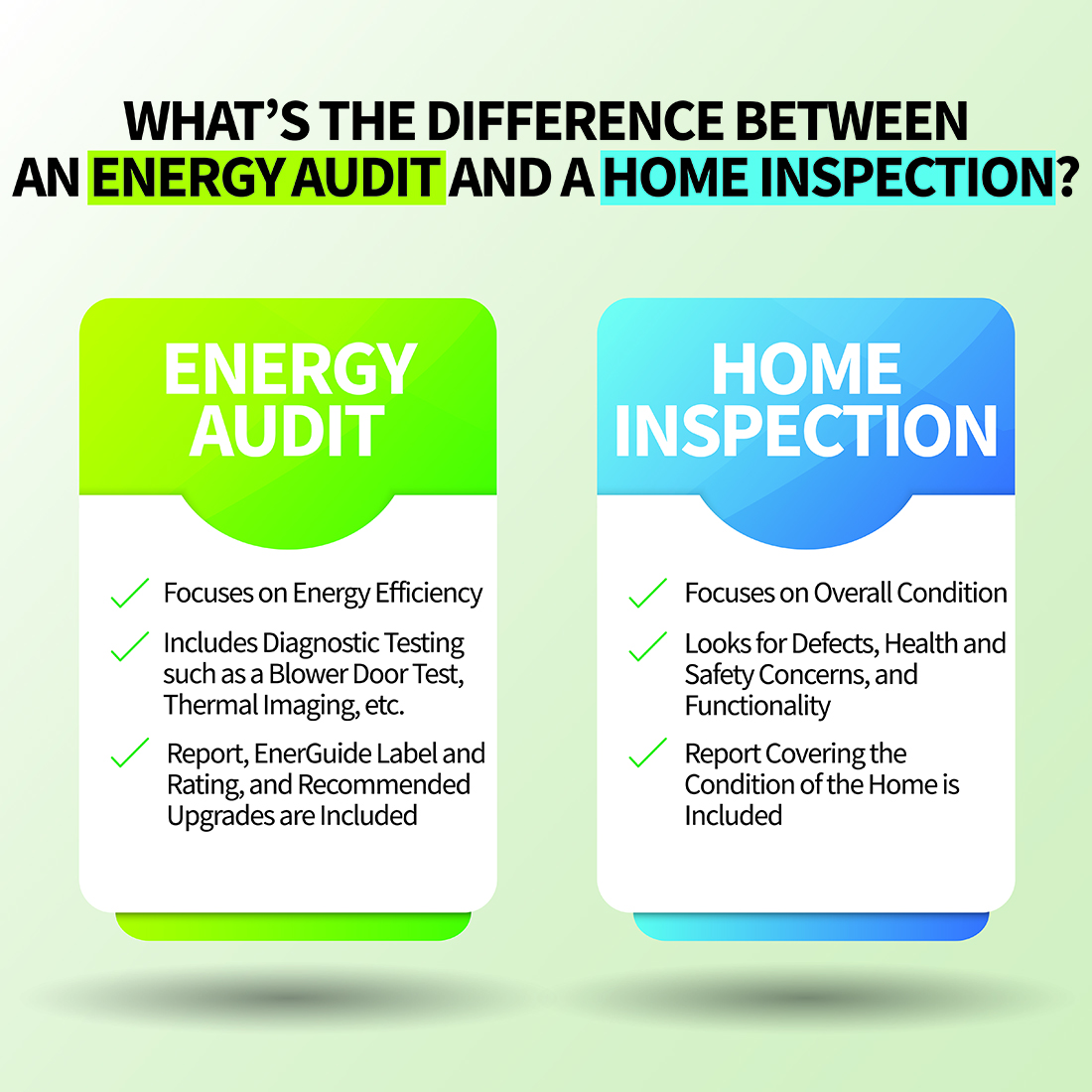Property value hack powered by energy testing
Property value hack powered by energy testing
Blog Article
Exactly How Power Testing Can Cause More Sustainable Living Solutions
Power screening is a vital device for promoting sustainable living. It discovers ineffectiveness in power use within homes. Approaches such as power audits and thermal imaging provide valuable insights. Homeowners can recognize areas requiring enhancement, from insulation to appliances. Addressing these inefficiencies can lead to considerable energy savings. Yet, many stay uninformed of the full capacity of these practices. What steps can individuals require to enhance their homes and add to a more lasting future?
Understanding Power Screening and Its Significance

Usual Methods of Power Screening
There are several usual approaches of power testing that property owners can utilize to analyze their energy performance (energy testing). One commonly made use of technique is the blower door examination, which measures the air leak in a home. By pressurizing the building, it determines breezy areas that may call for sealing. Another approach is thermal imaging, where infrared video cameras identify temperature variants in wall surfaces, ceilings, and home windows, highlighting insulation issues.Energy audits are also popular, involving a detailed assessment of a home's energy use, commonly performed by a specialist. These audits may include examining home heating and cooling systems, appliances, and overall power intake patterns. Additionally, clever energy meters can give real-time information on power use, assisting home owners recognize their usage routines. Together, these approaches offer valuable understandings, allowing homeowners to make enlightened choices concerning improving their power effectiveness and promoting lasting living techniques
Identifying Energy Inefficiencies in Your Home
Identifying energy ineffectiveness in a home is necessary for home owners intending to reduce power consumption and lower energy expenses. Typical locations to assess consist of insulation, windows, and appliances. Poor insulation can result in substantial warmth loss in winter season and unwanted warmth gain in summertime, making cooling and heating systems function harder. Breezy home windows contribute in a similar way, enabling conditioned air to get away and raising power demand.Additionally, out-of-date devices frequently eat extra power than their modern-day counterparts, even more worsening ineffectiveness. Home owners should also think about the lights system, as incandescent bulbs use even more power contrasted to LED options.Regular maintenance of cooling and heating systems is important, as overlook can lead to decreased performance. By methodically evaluating these aspects of a home, house owners can determine locations requiring improvement. Addressing these inadequacies not just improves convenience yet also contributes to a much more lasting lifestyle by reducing energy waste.
The Role of Energy Audits in Sustainability
Energy audits play a vital function in promoting sustainability by offering house owners with a considerable assessment of their energy usage. These assessments determine locations where power is wasted, permitting individuals to recognize their consumption patterns and make educated choices for renovation. By exposing ineffectiveness in home heating, cooling, insulation, and devices, energy audits serve as a crucial device for lowering overall power demand.Furthermore, they help with the execution of energy-saving steps, such as upgrading insulation or mounting energy-efficient lights, which can substantially decrease utility costs and reduce carbon impacts. The understandings acquired from a power audit encourage property owners to focus on sustainability in their living atmospheres. As more families take part in this process, the collective impact adds to more comprehensive ecological objectives, promoting a society of energy awareness and duty. Inevitably, power audits are fundamental to progressing sustainable living options, profiting both specific homeowners and the environment at huge.
Cutting-edge Technologies for Energy Effectiveness
As property owners increasingly look for to enhance their power efficiency, cutting-edge modern technologies are arising to support these ventures. Smart home systems, furnished with sensing units and automation, permit homeowners to monitor and manage power consumption in real-time. These systems can change heating, lights, and air conditioning based on occupancy, thus lowering waste.In addition, innovations in energy-efficient appliances have actually made substantial strides. Instruments such as ENERGY STAR-rated refrigerators and cleaning machines consume less energy while providing optimal efficiency. Furthermore, the integration of renewable energy sources, like photovoltaic panels and wind turbines, allows homeowners to produce their own power, decreasing dependence on nonrenewable resources.Building materials have actually likewise developed, with choices like protected concrete types and energy-efficient windows adding to minimized energy loss. With each other, these innovative innovations not just boost energy efficiency but likewise cultivate an even more sustainable living atmosphere, empowering home owners to make impactful options in their energy intake methods.
Long-Term Benefits of Lasting Living
While numerous may view visit lasting living as a pattern, its long-term advantages extend much past mere way of life choices. Welcoming lasting practices leads to substantial reductions in carbon impacts, adding to a healthier earth. By lessening resource intake and focusing on renewable resource, individuals and communities can experience reduced energy prices. This monetary alleviation can improve economic stability over time, enabling reinvestment in various other necessary areas.Furthermore, sustainable living cultivates more powerful area ties as people collaborate on neighborhood initiatives, promoting social communication. Wellness benefits additionally emerge, as minimized air pollution and enhanced environment-friendly spaces boost air high quality and total well-being. In addition, future generations will acquire a much more lasting atmosphere, making certain the accessibility of all-natural sources and biodiversity. Inevitably, the lasting benefits of sustainable living encompass environmental, financial, and social measurements, providing a compelling case for individuals to adopt and keep these methods for the greater good.
Actions to Apply Energy-Saving Solutions
Carrying out energy-saving options starts with a complete analysis of power intake patterns to identify areas for enhancement. Once these patterns are comprehended, people can pinpoint energy-efficient upgrades that straighten with their requirements. Continuous monitoring and adjustments to energy usage guarantee that these options stay efficient over time.
Analyze Energy Intake Patterns

Evaluating energy intake patterns is an essential step toward determining reliable energy-saving remedies. By systematically tracking usage across various times and people, devices and companies can determine areas of excessive consumption. This analysis can disclose peak usage periods, allowing a much better understanding of when energy demands are highest. Furthermore, examining patterns permits comparisons between comparable home appliances, highlighting those that operate much less efficiently. Data collection techniques, such as smart meters and power audits, provide valuable insights right into overall power usage. Additionally, recognizing patterns this hyperlink in time can assist in acknowledging seasonal variations and shifts in intake habits. This foundational expertise is vital for establishing targeted techniques that promote sustainable living and reduce overall energy expense.
Identify Energy-Efficient Upgrades
To properly apply energy-saving options, recognizing energy-efficient upgrades is necessary for both services and property owners. This procedure starts with a detailed analysis of existing systems, including cooling and heating systems, insulation, and home appliances. Upgrades may encompass installing ENERGY STAR-rated devices, boosting insulation, and utilizing energy-efficient home windows. In addition, carrying out smart thermostats can enhance heating and cooling routines, decreasing energy usage. Changing to LED lighting is another effective action, as it consumes substantially less power than typical light bulbs. In addition, discovering sustainable energy choices, such as photovoltaic panels, can give long-term savings. Eventually, prioritizing these upgrades not only adds to decreased power costs yet likewise cultivates a dedication to sustainability, profiting both the environment and future generations.
Monitor and Change Use
Surveillance and readjusting power usage is essential for making best use of the advantages of energy-saving options. Routinely evaluating energy intake patterns permits individuals and organizations to recognize areas for improvement. By utilizing wise meters and power administration systems, users can track real-time usage and detect any kind of anomalies that might suggest inefficiencies.Adjusting habits, such as shutting off lights and unplugging extra gadgets, even more boosts power savings. In addition, scheduling appliances to operate throughout off-peak hours can substantially decrease costs.Conducting regular energy audits guarantees that executed remedies stay effective over time. By actively participating in tracking and readjusting practices, people can enhance their power efficiency, add to sustainability initiatives, and eventually minimize their ecological impact.
Frequently Asked Inquiries
Just how much Does a Power Audit Commonly Price?
Can Energy Testing Help In Reducing Energy Expenses?
Energy screening can significantly reduce energy expenses by recognizing inadequacies in a home's power usage. By dealing with these concerns, house owners often experience lower consumption and costs, causing even more economical energy administration and boosted monetary cost savings.
What Credentials Should a Power Auditor Have?
An energy auditor must possess pertinent qualifications, such as RESNET or BPI, along with experience in structure scientific researches. energy testing. Strong analytical skills and knowledge of energy performance techniques are crucial for conducting accurate evaluations and offering effective referrals
Exist Federal Government Rewards for Power Efficiency Upgrades?
Federal government motivations for power efficiency upgrades commonly exist, including tax refunds, gives, and credit scores. These programs intend to motivate companies and home owners to purchase energy-saving technologies, eventually advertising ecological sustainability and lowering overall power intake.
How Typically Should I Conduct Power Testing in My Home?
Energy testing must preferably be performed yearly to determine inadequacies. Property owners might consider much more regular evaluations after considerable improvements, changes in energy bills, or if unusual drafts or temperature level variants are observed within the home. Power screening allows the evaluation of exactly how well a home makes use of power, identifying areas where waste happens. Determining power inefficiencies in a home is necessary for house owners intending to decrease energy usage and lower energy bills. Energy audits play an essential function in promoting sustainability by supplying house owners with a substantial assessment of their power use. By exposing inefficiencies in home heating, air conditioning, insulation, and home appliances, energy audits offer as a vital tool for reducing overall power demand.Furthermore, they assist in the implementation of energy-saving measures, such as updating insulation or installing energy-efficient lights, which can significantly lower energy bills and lower carbon footprints. Power testing can considerably reduce energy bills by determining ineffectiveness in a home's power use.
Report this page